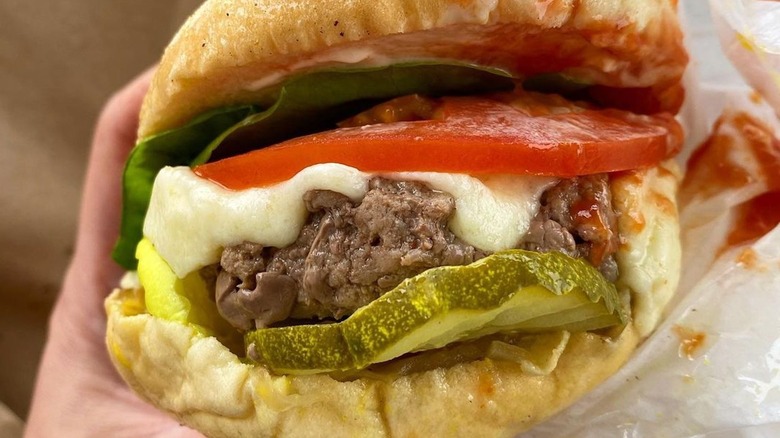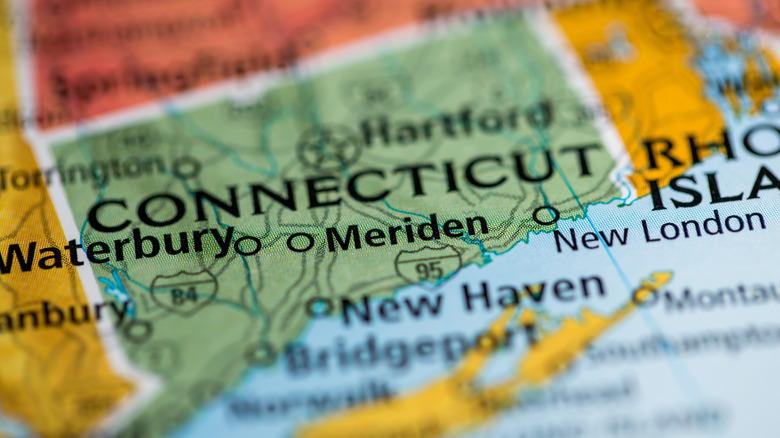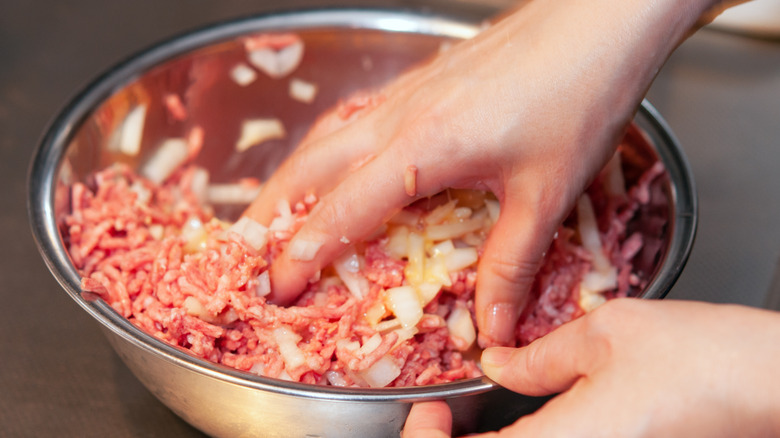The Storied History Of Steamed Cheeseburgers In Connecticut
There is a theory floating around many New England diners and restaurants that the western half of the state Connecticut is just one large suburb for the everlasting rival: New York. There is a certain amount of logic, albeit stretched, to this theory. Yankee Magazine acknowledges that there is a cultural shift once you cross from east to west over the Connecticut River. Not only is there a clear difference in baseball allegiance — i.e. New York Yankees vs. Boston Red Sox — but a difference in food tastes as well. Western Connecticut serves up the tomatoey Manhattan-style clam chowder, while Eastern Connecticuters serve the creamy New England-style stuff. And so Connecticut remains in limbo between the two regions.
But the argument that Connecticut does not have a core identity of its own is unfounded. In the heart of the state is a town that makes something totally original. Something so uniquely Connecticut that it stands well apart from the greater cultures of New York and New England. We're talking, of course, about Meriden's steamed cheeseburgers. You read correctly. Steamed cheeseburgers.
Steamed cheeseburgers have been around in one form or another since the 1890s (via Yankee Magazine). Originally invented in Middletown, the city of Meriden has taken up the mantle as being the only place in America where one can find the steamed, cheese-covered burgers that have a history all their own.
A truly Connecticut burger
There's a case to be made that how Connecticut does burgers is the right way. After all, the state, according to The Library of Congress, served up the nation's very first hamburger. Louis' Lunch in New Haven broils their burgers vertically, serving them between two pieces of white toast, with onion, tomato, cheese, and no condiments. No doubt ketchup lovers are pleased this didn't become the norm.
A little ways north in Meriden, steaming hamburgers are the way to go. Ted's Restaurant has been steaming up burgers for locals and visitors alike since 1959. Clinging onto this unique local tradition is the driving force that keeps the restaurant going. It's a tradition you won't find practiced anywhere else in the country.
Though around for decades beforehand, today's steamed burgers are a direct byproduct of the Great Depression, according to Chronicle 5 WCVB's YouTube channel. During the 1930s, workers would eat steamed rolls of cheese sandwiched between two slices of bread. These sandwiches were an affordable, calorie-packed snack that would get them through their day. As meat was unthinkably expensive, a roll of steamed cheese became the norm. However, after the Depression waned, the people of Meriden, itself a former industrial hub, began requesting newly affordable ground beef to go along with their steamed cheese. Seeing no reason to purchase a griddle, the beef was steamed alongside the cheese, thus giving rise to the world's only known steamed burgers, or "hamburgs," as the locals call them.
How steamed hamburgs are made
There is a special tool utilized for steaming hamburgs that resembles something of a large, stainless steel sauna (via Chronicle 5 WCVB). Five ounces of seasoned meat is placed straight into rectangular tins and slid into the steamer to cook for about 10 minutes. Once the meat is removed, it is placed on a bun and slathered with gooey, steamed cheddar cheese, which melts over the meat like cascading lava.
According to Atlas Obscura, steam boxes can cook up to 12 hamburgs at a time. Opening the box expresses a rush of steam that billows over the burger master like fog rolling off the sea. The trick is to get the cooking time right. Too long in the steamer, and you're left with a stiff, rubbery, unappetizing cube of meat. Get the timing right, however, and you've got yourself a moist juicy burger devoid of any char or grease. This particular point has led fans of steamed hamburgs to claim them to a healthier alternative to traditional grilled fair.
Regardless of what camp you fall into, pro- or anti-steamed burger, there is no denying that it is an interesting bite of local color. Where else but in the exceedingly strange and diverse place we call the United States could we find such passion and promise over how hamburgers are cooked? It's a beautiful thing.


